Football and hope in the Nagorno-Karabakh Republic - a forgotten region fighting Fifa's sanctions
This mountainous region may be ignored by the world, but they're looking to make a mark and gain Uefa recognition
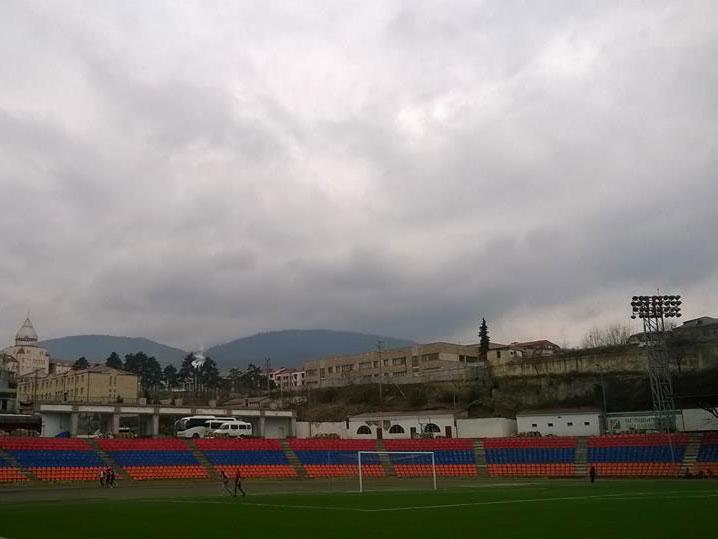
Your support helps us to tell the story
From reproductive rights to climate change to Big Tech, The Independent is on the ground when the story is developing. Whether it's investigating the financials of Elon Musk's pro-Trump PAC or producing our latest documentary, 'The A Word', which shines a light on the American women fighting for reproductive rights, we know how important it is to parse out the facts from the messaging.
At such a critical moment in US history, we need reporters on the ground. Your donation allows us to keep sending journalists to speak to both sides of the story.
The Independent is trusted by Americans across the entire political spectrum. And unlike many other quality news outlets, we choose not to lock Americans out of our reporting and analysis with paywalls. We believe quality journalism should be available to everyone, paid for by those who can afford it.
Your support makes all the difference.High up in the mountains of Nagorno-Karabakh, the tiny de facto republic at the crossroads of the Eurasian continent, hope is a priceless currency. Few people appreciate its value more than Samuel Karapetyan.
Inside the offices of the Artsakh Union of Freedom Fighters, the Head of the Artsakh Football Association (AFA) uses carefully chosen words to explain how his organisation has begun the long process of winning UEFA recognition for a region which has spent 30 years living in the shadow of war.
“All this war and conflict is temporary”, he says lighting a cigarette. “One day soon, the Artsakh national team will participate in the World Cup or European Championship”.
The legacy of war bleeds into the present. Casualties from the 1988-1994 Nagorno-Karabakh conflict between Armenia and Azerbaijan number anything from 25,000-35,000, with as many as a million people internally displaced. Today the Nagorno-Karabakh Republic (NKR) exists as a rogue state, supported in military and financial terms by Armenia but recognised internationally as an occupied territory within Azerbaijan.

A 1994 ceasefire brought a halt to the fighting and installed a fragile peace in the region, but the 150,000-strong ethnic Armenian population of Artsakh, as the territory is known locally, have since lived without security, sandwiched between two belligerent states locked in a conflict which has its roots in the collapse of the Soviet Union.
Here in these mountains, football imitates real life.
“We are hopeful”, reiterates Karapetyan. “In fact we are convinced that recognition will come soon, because all the world is interested in establishing peace in this region. Sooner or later Azerbaijan will recognize Artsakh, then we will participate not just in football but in every aspect of international life”.
The preliminary discussions with Uefa over the AFA’s membership began in November 2016. The dialogue remains embryonic, but Karapetyan says it represents a crucial first step in eventually bringing the territory out of isolation.
“The process is underway. We are confident that the Artsakh team will participate in international tournaments, and that it is coming soon. If we were not confident in our success then we wouldn’t live here”.
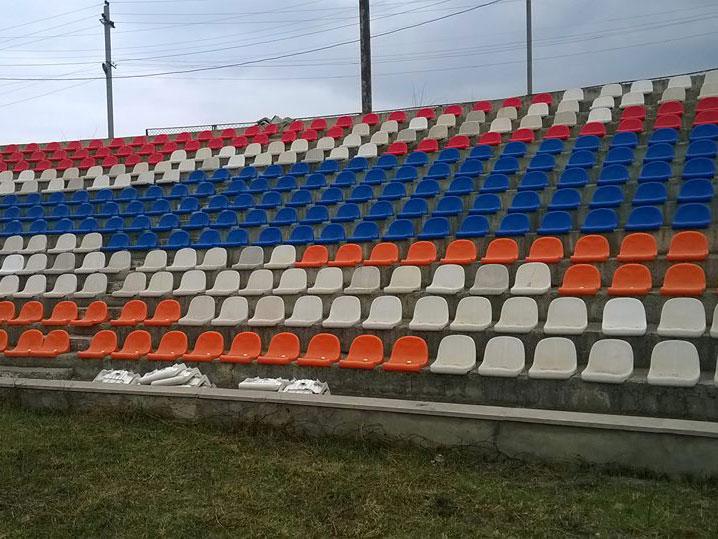
The City Stadium in the NKR capital Stepanakert sits at the bottom of a procession of steps leading down almost from the very door of the presidential palace. On the morning of March 8th 2017, there is a game taking place between the under-15 side of local club FC Artsakh and a development squad sent over from Yerevan by the Football Federation of Armenia (FFA).
The stadium is a classically Soviet, sprawling concrete bowl, with seats decked out in the red, blue and amber of the Armenian flag, save for one corner of the ground where the NKR’s white chevron motif dominates. It was renovated last year at the public expense, but the dust and dirt that still coats its newly-installed seating attests to a stadium suffering from chronic under-use.
To reach Stepanakert from the Armenian capital requires a grueling six-hour bus ride through the winding mountains of the lower-Caucasus. The roads cling to the spiraling hillside for what seems an eternity, until finally snow-topped peaks give way to the lush greenery of Karabakh as the capital reveals itself some 2,600-feet up. For all its natural beauty, the journey only reinforces the region’s sense of isolation.
The game at City Stadium is a drab goalless draw, the only highlight a red card for the young Armenian goalkeeper following an impetuous dash from his goal resulting in a reckless foul. Football here is not of a good standard.
For the young footballers of Stepanakert, this has been a valuable opportunity to test themselves against opposition from outside the republic’s borders. At the start of the last decade, the Association of Football Federations of Azerbaijan (AFFA) successfully appealed to Fifa against the involvement of teams from the NKR in competitions organized by the FFA in Armenia and vice versa, so now any cross-border involvement is limited to occasional friendly games against sides who are hardy enough to make the long trek.
“Before 2006 there was no organised football in Artsakh” says Slava Gabrielyan, the Uefa Pro-license coach with responsibility for selecting the nascent NKR national team. March 1st of that year saw the establishment of FC Artsakh, the region’s only formal football club, but there has never been a national championship here for the team to compete in. “We have some friendly games against teams from Armenia and sometimes from Georgia”, he says. “But we never have competitive games. It’s not possible for us”.
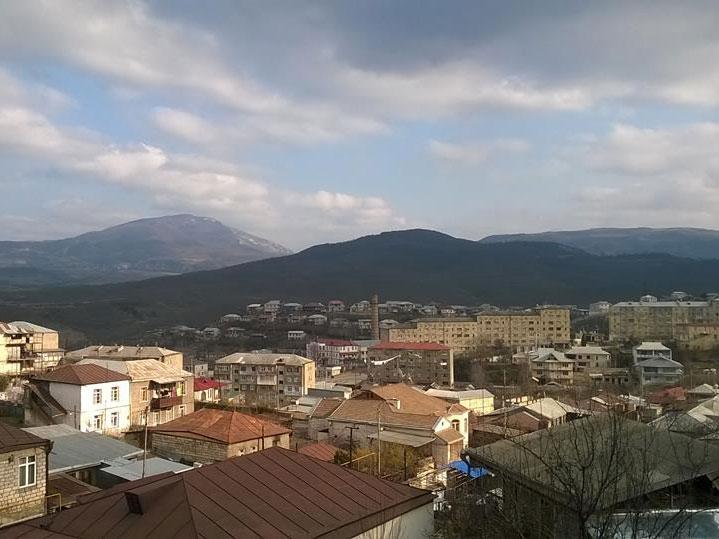
In 2016, the Unity Cup was organised in Stepanakert by the First Armenian Front, a fan organisation from Yerevan which lobbies for improved conditions for the country’s domestic football. The cup was intended as a show of solidarity between the grassroots in Armenia and Karabakh, part of a wider initiative that involved sending food and supplies to Artsakh troops on the front line. Like all competitive football here though, it was a singular event. There are plans to revive the idea later this year, but the NKR remains a long way from having a regular football championship of its own.
Instead, the republic’s seven provinces organise annual community tournaments from which representative sides are formed to compete in a final play-off in the capital, but the arrangement is an amateur one. Gabrielyan says the republic isn’t large enough to support a full-time league championship; Stepanakert has only around 350 people actively involved in football, but the Fifa sanctions against cross-border competition have effectively shut down badly needed links between the NKR and its neighbours.
“In Crimea, Uefa have recognised that the territory is neither part of Russia nor Ukraine” says Gabrielyan. “They have put measures in place to allow football there to prosper. We hope and expect that Uefa will do the same here in Artsakh”.
The armed conflict between Armenia and Azerbaijan over the NKR is a long way from being resolved. The ceasefire is regularly broken on both sides of the line of contact, resulting in the deaths of dozens of soldiers and civilians.
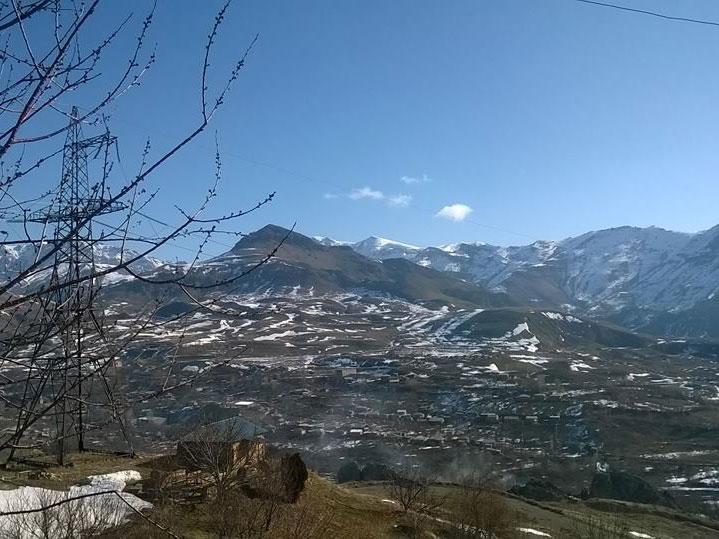
In April 2016, the situation deteriorated into a six-day war which many international observers feared would reignite full-scale hostilities between the two.
At the same time, the AFA General Secretary, Karen Vanyan, was in the final stages of organizing a series of games in Stepanakert between the NKR team and number of other un-recognised territories. Those plans had to be cancelled due to the fighting.
“The problem is that we don’t have the means to show the world that we can play”, says FC Artsakh coach Levon Mkrtchyan. “We only play here for ourselves, but our aim is to show outsiders what we can do. We want the world to know about Karabakh and Karabakh footballers”.
One of the realities of living in a region stalked by conflict is that security measures trump most other considerations. When Artsakh men reach 18 years-old they are whisked away for two years of military national service. Gabrielyan and Mkrtchyan believe footballers should be exempt from the rule but the status quo holds, meaning FC Artsakh’s players have their development interrupted a delicate stage.
The AFA does what it can to limit the disruption. Much of the funding it receives from the Ministry for Sport is reinvested in training up local coaches to international standard; Mkrtchyan currently holds a UEFA B-license, and plans to match his colleague’s Pro-license soon. With the NKR a non-entity in world football, both coaches are registered with Uefa via the FFA in Yerevan
“We take coaching seriously here”, says Karapetyan. “This year we will have some international coaches from other countries coming to Stepanakert to work with our players. However, we mostly have to use retired coaches so as not to cause problems for other national football associations”.
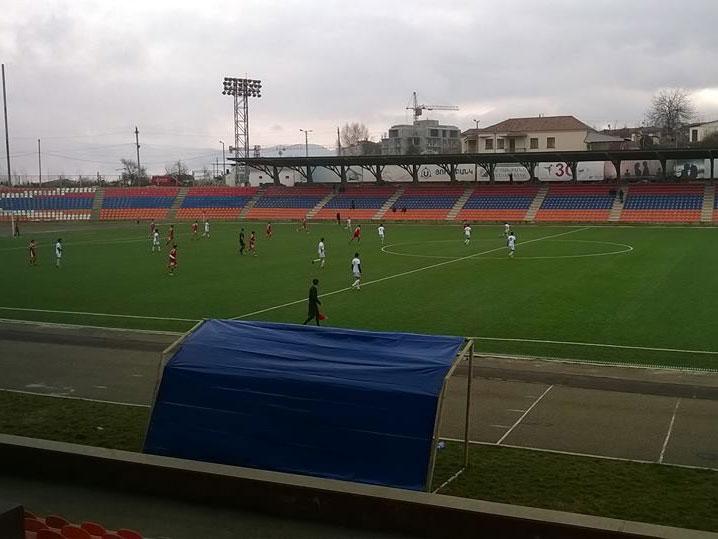
Internationally, the AFA’s work continues largely under the radar. In 2010 FC Artsakh competed in a tournament in France organized by the Armenian diaspora, and later this year they will travel to Catalonia as part of a similar arrangement.
For Gabrielyan’s national team, their most conspicuous foray into the international scene remains the 2014 ConIFA World Cup in Ostersund, Sweden, where defeats to the County of Nice and the Isle of Man’s Ellan Vannin saw them eliminated in the first round. A formal protest made to ConIFA by the AFFA in Baku over Karabakh’s involvement went unheeded by the organizers.
As Karabakh struggles for internal solutions, football over the border in Azerbaijan continues to go from strength to strength. FK Qarabag in the capital Baku, themselves a club in exile from the NKR’s now-derelict city of Aghdam, have performed well in Europe in recent seasons, and continue to push for a first appearance by an Azerbaijani club in the group stages of the Champions League.
Qarabag are a political chess piece for the government in Baku. Lavished with funding from the energy-rich country’s recent oil boom via the state-backed holding company Azersun, figures both inside the club and out make no secret of Qarabag being a symbol of Azerbaijan’s rightful dominion over Nagorno-Karabakh.
In Yerevan, the picture is different. Here, Qarabag are derided as one more instrument of government propaganda, drunk on dirty money channelled by a state desperate to legitimise its claim on Karabakh in the eyes of the world. In the middle of it all, the AFA quietly continues its work, its future bound up in the throes of forces over which it exerts no control.
“We’d all like to think that football is separate from politics”, says Vanyan. “Azerbaijan does not have the right to decide for our children whether or not they play football”.
Join our commenting forum
Join thought-provoking conversations, follow other Independent readers and see their replies
Comments